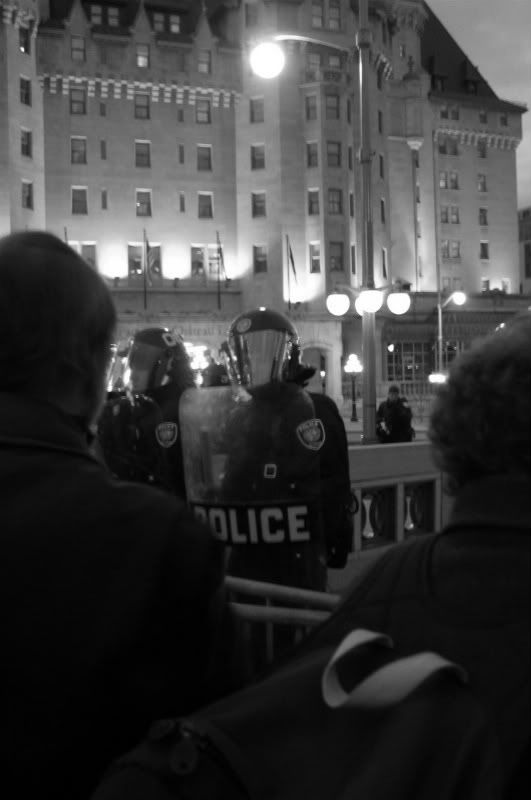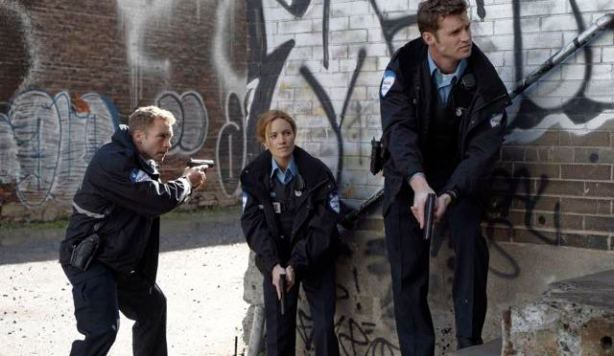In recent years, many media reports and public movements have criticized the practice of police organizations investigating their own colleagues in cases of alleged misconducts or corruption. Police misconduct and deviance is a serious matter seen in Canada and across the world. With misconduct and deviance existing in policing, many argue the notion of police investigating police is not trustworthy and legit.
A number of high-priority cases and media reports, throughout 2004 to 2007, caught the attention of Commission for Public Complaints against RCMP organization and they believed these cases indicate the police investigating police approach is ineffective and subject to bias. The notion of police force seriously investigating their own colleagues is often a deception because, in reality no police officer would want to investigate and challenge their fellow colleague’s decision of breaching the; thus lies the problem.
Without taking proper investigative practices against it, public trust in policing and image of policing are at risk. Once public loses confidence in the police force, the public will no longer depend on police force anymore and soon take matters into their own hands. To them, they may think that since the police forces aren’t accountable to their own actions, why should they? As a result, many vigilantes may form and commit crimes. This topic is significant because it involves the police organization, the victims and public.
After spending significant amount of time in researching for a resolution, it is agreed by the public that police investigating police obviously don’t work well. Moreover, it has come to the attention that a separate investigative unit or a civilian oversight, with no relation to the police organization itself, be created to conduct investigations of alleged police officers involved in misconduct or corruption.
In the book, “Police Corruption: Deviance, accountability and reform in policing,” written by Maurice Punch, the practice of “policing is accountability” (Punch, 2009, p.2). He states that the ideas of policing are suppose to be impartial and trustworthy. Since police organizations are given the authority to maintain peace, each and every decision police individuals make, it must be fair and accountable. When a police member has crossed the line, he or she shall be deemed responsible for their actions; in order to maintain the idea of police accountability.
Corruption is in every level of organization; whether if it is “low policing” or “high policing”, corruption is present. Essentially, the notion of corruption is involved with the abuse of official power and breach of trust. With the powers given to the police force to maintain peace, police individuals who abuse their authorities to commit deviance acts for personal gains has committed in police corruption.
In the book Punch argues deviance exists in the nature of police organization, police work and culture. He furthermore elaborates the level of deviance using the apple metaphor. He describes the individual level of deviance as “bad apples” and the institutional level as “rotten orchards” (Punch, 2009). Consequently since corruption is a universal characteristic of policing, it is logical to conclude that corruption does not simply involve “bad apples,” but in institutional deviance or “rotten orchards”.
Police subculture, inside the police organization, is what shapes the “informal code;” a guide that governs police behaviours. Police subculture consists of shared norms, values, and beliefs that police individuals follow. As Punch stated (2009) “take culture to refer to norms, values, and practices tied to ‘the way we do things around here’” (p.36). Within the subculture, elements like rule of silence, solidarity, dichotomous thinking, cynicism, suspicion, etc will make it difficult to investigate corruption within police organization.
To start off, solidarity in the police subculture refers to loyalty that each police individuals have for each other, where officers will always back up partners and take action quickly when other officers are in trouble. An element that separates citizens and police officers is cynicism in the police culture. It regards non-police individuals as potentially unreliable and unsympathetic, one whom cannot be trusted with police information (Punch, 2009). The blue wall of silence, under the police subculture, is the code where each police officer shall rat out the secrets regarding another fellow member of the police force. This element is really special because police officers follow this culture to lie in order not to expose the secrets of another police officer, even if the secret revolves a serious violation of the law.
Police individuals who follow the police subculture will choose loyalty over integrity; choose brotherhood over the correct thing to do. With this police subculture existing in the police force, it is extremely difficult to gather Intel regarding police corruption. If that is the case, police investigating police is incomputable and unaccountable. If no member of the police force is willing to snitch on their colleagues, then it is safe to conclude that no member of the force conduct a proper impartial investigation challenging their own colleagues’ decisions.
The characteristic trait of dishonesty is noticeable in police individuals. As stated by Goldschmidt and Anonymous (2008), “They [police officers] express firm belief that their extra-legal methods are necessary deterrent to criminal behaviour…” (p.113). A study, Goldschmidt and Anonymous referred to, explains police members, by the means of dishonesty, achieve the justified means by committing deviant acts such as falsifying evidence, perjury, etc. They believe this is the only way to ensure justice has been served and that bad people are locked up. This trait is very similar to the Noble Cause profile, where one believes that tough and devious methods are suitable to accomplish justice. Because of this trait of dishonesty, it is what blinds the police members’ view of impartial policing.
Police officers use techniques of neutralization to justify and rationalize their own moral guilt in order to furtherance their legal means of dishonesty. The use of dishonesty is for police officers to justify their wrongdoings of corruption for personal gains; whether they’re fabricating evidence or committing perjury, they can always have the excuse of violating for, “greater goods of public safety, organization pressures from management, or sub-cultural peer pressures” (Goldschmidt, Anonymous, 2008, p. 129). With this kind of dishonesty behaviour, it is extremely difficult to trust that police investigating police practices are accountable, impartial, and trustworthy.
Numerous attempts have been made by community groups to advocate the campaign of a civilian oversight, as mentioned in the beginning as a resolution, which will be in charge of the police complaint process. With this debate of a civilian oversight group, the public considers it beneficial to replace the practice of police investigating police. The public are aware of the flaws in practices of police investigating police as secretive, unreliable, biased, in other words –unaccountable. From this problem, many believe this civilian organization is necessary for legitimate means of policing. The public also consider this idea will benefit by having an environment where accountability, openness, and impartiality are served (Hryniewicz, 2011).
First, police investigating police practices are based on internal form of reviews. Hryniewicz (2011) stated that “previous research revealed that the lack of transparency evident within the internal handling of police complaints can be significant barrier to police legitimacy, accountability” (p.78). On the contrary, the civilian oversight will be a form of external and transparency review, “largely centred on issues of accountability and legitimacy” (Hryniewicz, 2011, p.77). Due to the lack of these fundamentals, the idea of civilian oversight is a perfect concept.
This organization contributes in a couple ways. Civilian oversight is centred on, “reaffirming the community, citizenship, and public security” (Hrynewicz 2011, p78); something the police duty lacks. In order to make this concept successful, the public’s participation is the crucial. The public can work within community agencies as a role of public policing by reviewing social control efforts of the police force. They can engage in civilian review procedures to evaluate possible cases of police misconduct and corruption.
The concept of allowing civilians to evaluate possible cases is a sound idea because civilians tend to be objective and view the situations in a different way compared to the police do. Another concept to this oversight notion also allows reaffirming citizenship and social values by having the right and privilege to critically question and influence cases. Because this organization will be run by civilians, information can be accessed by all level of citizens and consequently everyone is aware of the latest news of police misconducts.
Ideally, this civilian oversight will consist of community members and even former police officers. In my opinion, I think it is a good idea of including police officers because the whole point of having an independent and diverse unit is to have different point of views analyzing the cases. Therefore, having formal officers’ point of view are very helpful. However, I only agree that it is helpful; if and only if, the former officers were not involved with any deviant acts or participate in corruption in their duration of the force. If former officers, who are involved with this civilian oversight, were also involved with deviant acts or corruption during their time in the force their opinions would favour the scrutinized cop, for obvious reasons.
As I mentioned before, the police organization are secretive and protective, as a result not exposing certain information. Therefore, the civilian oversight unit cannot guarantee the proper access it needs to appropriately investigate misconduct. Perhaps a solution could be the independent unit consult a judge to issue an order for the police organization to surrender all relevant facts involving the cases.
After acknowledging the idea of the oversight model, one should consider the differences between the model and the police investigating police approach, in terms of process and conclusions. From here I draw your attention to an article posted on 1st of October 2010, from the website, “thepolicefile.ca” about a case involving an innocent man, brutally beaten by two civilian clothed officers.
On January of 2010, two civilian clothed officers responded to what appears to be domestic violence case. The officers arrived to the door of Yao Wei Wu and brutally beat him, causing serious injuries. It then appears a day later, that they arrived at the wrong door. The Vancouver police chief, Jim Chu, apologized to Mr. Wu. As a result, a complaint was filed by Mr. Wu. According to the article, the police were told to complete the investigation by July, but then were given numerous extensions from July to September to late October. As Mr. Wu’s lawyer stated, the only reason why this investigation is considerably prolonged is because the two accused were police officers. If the two parties were both civilian, the investigation would be completed within days.
This is a perfect example that defines why police investigating police approach is not going to be effective and accountable. According to lawyer Cameron Ward, the police are known for their tremendous delays of investigations of alleged police members, “inordinate delay is one of the hallmarks of police investigations of police…” (Sewell, 2010). In addition, this also correlates to how the public feels toward the quality of police work in Vancouver. Towards the end of the article, Cameron also noted that an independent body would have been effective in completing the investigation with results.
So far, there are other areas of the world with similar ideal of a civilian oversight, reviewing police complaints. In Nova Scotia, they have this investigative unit called Serious Incident Response Team (S.I.R.T). In Hong Kong, the Independent Commission Against Corruption’s (I.C.A.C) goal is to exterminate corruption in numerous departments in government of Hong Kong, including law enforcement. The RCMP has an organization called the Commission for Public Complaints (CPC) which deals with RCMP complaints.
A recent article posted on, 7th of November of 2011, on the website called, thestar.com, describes Shirley Heafey working for the Calgary Police Commission and her assessment of this oversight body in Calgary that displays “progressive, transparent and accountable” (Steward, 2011) investigative practices, compared to the RCMP.
In the beginning when Heafey heard she was going to Calgary to handle the complaints from the public about the police, she expected the worst. The Calgary Police Commission is a group of civilians, appointed by the city council, to overlook the guidelines and operations of police members. Although the police investigates their own police misconduct investigations, Heafey’s job description consist of auditing police investigations of complaints (including excessive force) and can intervene at any point necessary. She “also attends monthly meetings, which consists of police superintendents who review complaints that have been investigated and makes recommendations to police chief about further action required” (Steward, 2011).
The article explains how Shirley was fairly impressed with the way things were run once she got there: superintendents would get back to her missed call and she had invites to their meeting and training sessions. Heafey continues on describing how in Calgary, she would have total access to files and databases. With the RCMP, she had to fight for the files that she needed to see. In Calgary, the police training in dealing with people with mental illness or some sort of health-care assistance is drastically contrasting to RCMP’s training, “According to Heafey, the RCMP’s training is ‘inadequate’ for the work they are expected to do” (Steward, 2011). Shirley also mentions the kind of openness found in Calgary, cannot be found inside RCMP; more importantly, RCMP’s culture is only to do what is necessary to protect their image.
The article also mentions that in Calgary, the public are inclined to speak up if they feel the public service is not up to par, they do not “put up with crap” (Steward, 2011) This kind of attitude is very contradicting from British Columbia, especially in city of Vancouver. In Vancouver, whenever the public has a complaint they are afraid of speaking up to the police service. They believe even if they take the initiative to present the troubling matter to the police, no progress will be made and they are only left with disappointment, just like how Mr. Wu was left disappointed for lengthened period. Thus, nowadays the public either complains quietly to each other or they take matters into their own hands, rather than going to the police. As a result, this illustrates the confidence the public has with their police services.
The reason behind bringing this article up is because it depicts how an oversight, that is independent to the police force, is a key concept that is proven to negate the traits of dishonesty and unaccountability of police investigating police practices. When this oversight becomes effective, it will definitely boost the confidence the public has with the police and more importantly, the image of the police force. I, including Heafey, would definitely recommend and support British Columbia to commence this idea of a civilian oversight body.
After explaining how effective this oversight body can be, in terms of the public’s side, it can also be beneficial from the police’s perspective. Presently, I am certain that the impression the public has of the police services, such as RCMP, is not where it should be. To be honest, the public of Vancouver is not satisfied with the quality of their work. With the whole concept of secrecy and solidarity, it does not help improve the image of the police force nor improve the quality of their work. Thus, with this oversight overseeing and supervising the investigations it will yield accountability, trust, and more importantly reliable results. Consequently, with good results and accountability, the public can regain their confidence with the police and rely on them once again.
Now after discussing the oversight body is a key concept, it is certainly difficult to immediately change and adapt. Therefore, I believe there should be a few steps to adjust the police service’s approach to this civilian oversight notion.
First of all, there will be no secrecy in the police force. Although civilians may not have access to the whole database, the civilian oversight bodies should definitely have all access to the database of the RCMP during investigations. The police force must surrender all files related to the investigations. In addition, every civilian should have the right to know the progress of their complaints, whether it is on its way, being reviewed, or rejected by the oversight department. If rejected, the civilian must be provided with a legitimate explanation, signed and approved by the head of the oversight department.
The police subculture is one of the essential elements that hold the police investigating police approach unaccountable. Therefore, I suggest modifying the police subculture by breaking the blue wall of silence. As explained above, the blue wall of silence is an unofficial code of conduct where police officers shall not blow the whistle on misconduct conducted by their fellow members. I understand that blue wall of silence is part of “doing policing,” however it must be broken to eliminate the secrecy idea. Perhaps, by breaking the blue wall of silence, we should encourage more whistle blowing from fellow members of the force and guarantee full protection and immunity.
References:
Goldschmidt, J., Anonymous. (2008). The Necessity of Dishonesty: Police deviance, ‘making the case,’ and the public good. Routledge 18. 2: 113-135.
Hryniewicz, D. (2011): Civilian oversight as a public good: democratic policing, civilian oversight, and the social, Contemporary Justice Review, 14:1, 77-83
Punch, M. (2009). Police Corruption: Deviance, accountability and reform in policing. United Kingdom: Willan Publishing.
Sewell, J. (2010, October 1). Police investigating police in Vancouver. Retrieved from http://www.thepolicefile.ca/?paged=2
Steward, G. (2011, November 7). Steward: The very model of a modern police force. Thestar.com. Retrieved from http://www.thestar.com/opinion/editorialopinion/article/1082953–steward-the-very-model-of-a-modern-police-force#article
 Ben did not deviate from the police culture norms as he kept his partner from getting fired, and as a result was given a desk job. During the second episode Ben catches one of the officers drinking on the job, and you can see the pained look on his face as he is struggling to uphold the blue wall, while also longing to say something. Ben has done this quite a few times already, where either he turns a blind eye or lies to save his partner, and this could lead to deviance is his career. He may be disturbed by what he is doing, however continuing to do so he will eventually become habituated (Punch, 2010).
Ben did not deviate from the police culture norms as he kept his partner from getting fired, and as a result was given a desk job. During the second episode Ben catches one of the officers drinking on the job, and you can see the pained look on his face as he is struggling to uphold the blue wall, while also longing to say something. Ben has done this quite a few times already, where either he turns a blind eye or lies to save his partner, and this could lead to deviance is his career. He may be disturbed by what he is doing, however continuing to do so he will eventually become habituated (Punch, 2010). Van Maanen, (2005) classifies citizens three ways: suspicious persons, know nothings and the asshole. The officers encounter daily interactions with the asshole. These people have no respect for them nor do they care for what they stand for. As a result, Nick may use excessive force towards these people and possibly jeopardize his career. They also encounter the know nothings, who nod their heads, and make their way, and the suspicious persons (mostly the troubled teenagers). Nick is able to justify his actions towards these people, because they are assholes. The lack of respect can allow an officer to perform “street justice” and rough up the individual they are dealing with (Van Maanen, 2005).
Van Maanen, (2005) classifies citizens three ways: suspicious persons, know nothings and the asshole. The officers encounter daily interactions with the asshole. These people have no respect for them nor do they care for what they stand for. As a result, Nick may use excessive force towards these people and possibly jeopardize his career. They also encounter the know nothings, who nod their heads, and make their way, and the suspicious persons (mostly the troubled teenagers). Nick is able to justify his actions towards these people, because they are assholes. The lack of respect can allow an officer to perform “street justice” and rough up the individual they are dealing with (Van Maanen, 2005).


